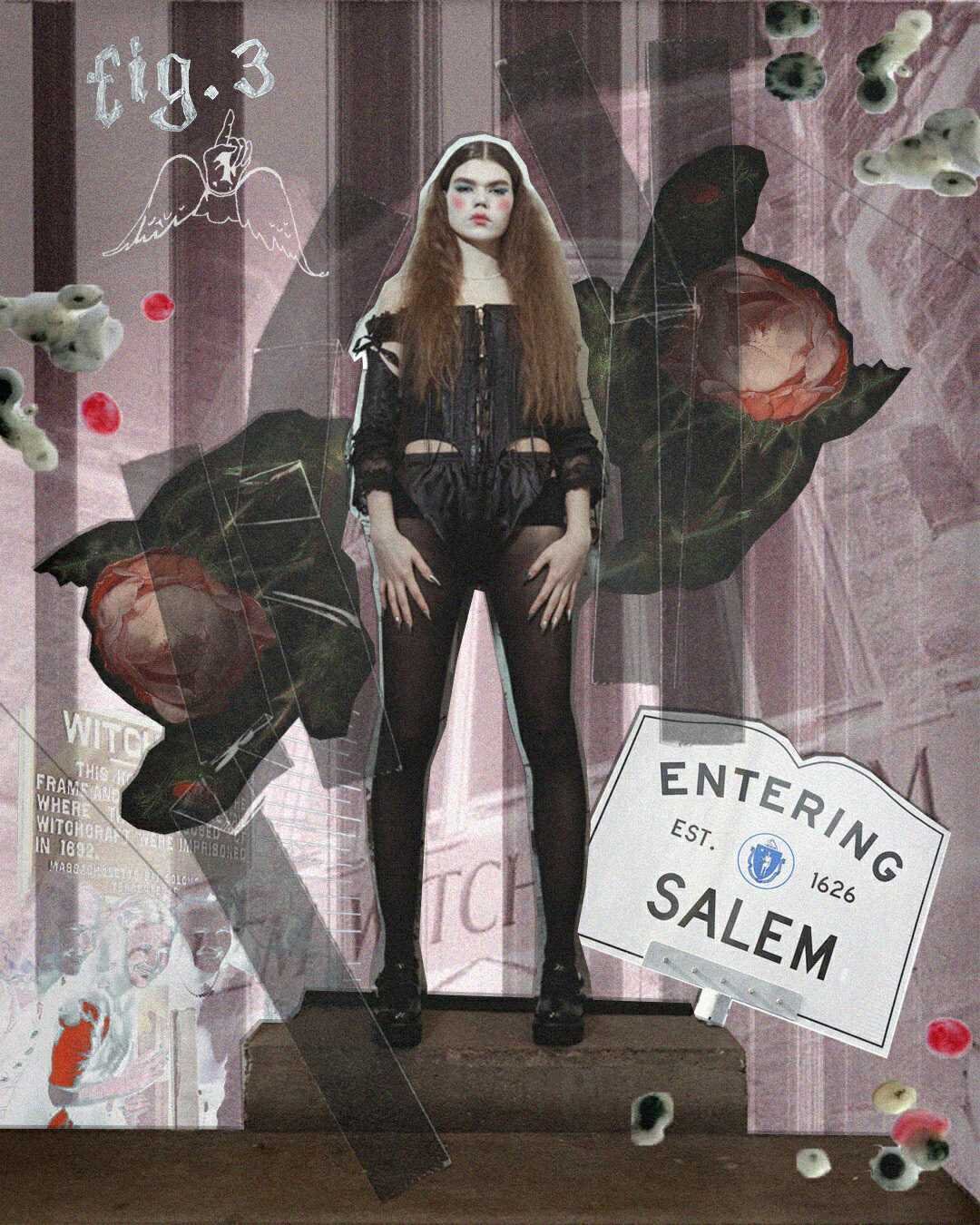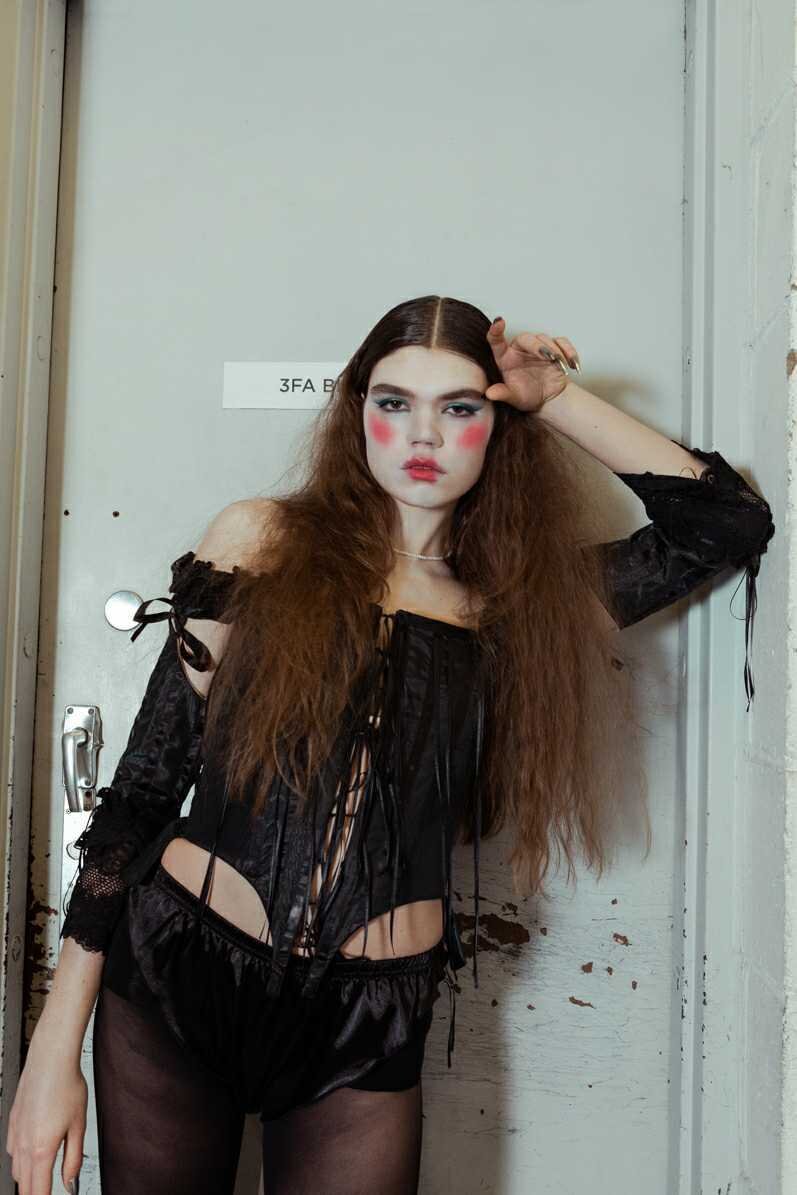It’s Time to Reclaim the Corset
I love corsets. Yes, right off the bat. One of the reasons why I have such infatuation with this piece of clothing is because it is such an indicator of our society's values. The very ideas of fixed regulation of propriety and modesty are, ironically, more flexible than ever when we analyze corsets and those who wear them. Yet, through the years, our collective knowledge of historical clothing disparages corsets because of how the item is associated with restrictive thought and repressive social norms, especially for women. Indeed, the corset can be an item imbued with heavy historical subjugation, but, just like many other fashion pieces, in current times we have learned to subvert the former meaning of our clothes to give them a new life via modern perspectives.
With that in mind, one might wonder: why have we been conditioned to hate the corset so much? Why is it a symbol of patriarchy, classism, sexism, and overall oppression? As the intent of this piece is dedicated only to the comeback of the so-hated garment, I recommend Karolina Zebrowska’s video “How Victorian Men Taught Us to Hate Corsets: The Biggest Lie in Fashion History” where she grants a thoroughly detailed explanation of how the corset was subject to a misleading narrative.
The Regencycore aesthetic that has been gathering traction this year is the perfect demonstration of how we can adapt historical fashion items to serve our modern whims. Drawing inspiration from the Regency Period (1811-1820), the Regencycore trend is more strong than ever because it has the ability to add nostalgic spice into our lives of social distancing. Seeking to appear regal to soften the hardships of isolation, gloves, pearls, tiaras, bows, billowy gowns, and of course, the corset, are the main staples of this dreamy escapism through fashion. The ever-so-complex corset could be described as the predecessor to the bra. Used as an undergarment, the corset helped to stiffen one’s body, push up cleavage, and give the silhouette that was in vogue at the time. For women, the corset helped to sustain their torso and alleviate back pain given the heavy fabrics and uncountable layers of petticoats and pads under their gowns that would make a simple walk a huge discomfort. For men, doublets served more or less the same purpose of a corset; they covered their extended beer bellies, broadened their stature, and conferred a sense of grandeur, dominance, and proper posture.
Fading from usage during the start of the Suffragette Movement at the beginning of the 20th century, the corset gradually started to lose its grip on society as values became more flexible--a direct indication of how the corset was bound to social norms and expectations. “It was there almost from the beginning,” says fashion historian and Director of The Museum at the Fashion Institute of Technology, Dr Valerie Steele, about the criticism of the corset for being painful and unhealthy. As corsets carried a sense of decorum, self-possessiveness, and high-class status, working-class women (the majority of the population during the 18th and 19th century) started to incorporate the corset in their daily lives. “It just shows that the women were willing to wear possibly uncomfortable corsets to show they were fashionable and feminine, like middle-class women.” says Dr Steele. Another aspect to be considered is that corsets are incredibly adaptable. Its laces are there so that the wearer can decide how much they want their corset to encapsulate their bodies.
Since the start, the corset has had different purposes for different people--but it is in its modern iteration that the corset has been able to shape-shift the most. In the late 80s and early 90s, British fashion designer Vivienne Westwood (known for her love of tartan and punk regalia), brought the corsets into the mainstream after they spent years in obscurity since the dawn of girdles, Spanx and bras. As an inhabiter of the punk scene, Westwood was heavily inspired by the fetish pornography the punks adored, and of course, the corset became one of the items donned by this group. “Westwood always loved to research in museums, so she brought out 18th-century corsets which were shaped like a cone, pushing the breasts up'', explains Dr Steele. French fashion designer Jean Paul Gaultier attributed new ideas to the corset as well - “When he was a little boy he made a tiny corset for his teddy bear because he loved his grandmother’s corsets. He brought a more modern version, 50s-pinup inspired ones, particularly when he had Madonna wearing his corsets for the Blond Ambition tour'', says Dr Steele.
Popular media is a source of inspiration for fashion nowadays and the Netflix original series Bridgerton is one of the main drivers behind the popularity of corsets in 2021. Of course, we have also learned to make trends functional, so the way we wear corsets now is completely different from how it was in the 17th, 18th, and 19th centuries. The Regency-style corset, when “compared with 17th-century corsets, is pretty comfortable! It is slightly high-waisted and the body doesn’t really have to be squeezed. What is interesting about the Regency Period is that a lot of men also wore corsets. Regency dandies used to also wear corsets to acquire a trim-look style,” says Dr Steele. What is most striking about the modern recognition of the corset is that it is now being understood as a new outlet for the liberty of feelings coming from one’s interpretation of one’s body. Before it was worn as outerwear, “the corset, like all items of underwear, was a secret garment only seen in intimate moments, such as with a lover,” says Dr Steele. To blatantly expose the corset on the street back in the 90s during the Westwood and Gaultier corset-mania was a daring act.
It is comical that the corset can be imbued with both the reverie of the ideal female body, chastity and moral-righteousness and an indicator of fervent sexual exploration. “People have always had different reactions about how it feels to wear a corset. Some people like it because the garment seems to "hug" them. Other people like to wear a corset because of the way it makes their body look - with the breasts exaggerated. In the past, some people recommended corsets on the grounds that they made the wearer stand up straight," says Dr Steele. It seems unusual to correlate a corset with comfort. Through the years we have heard actresses’ testimonies on how the corset they had to wear whilst shooting a film or series made them discomfortable causing difficulties to breathe, sit and move around. These problems arise from the fact that with huge film production everything has to be made efficiently and fast, and that affects the costume department as well. By not having the necessary time for one’s body to adapt to one’s corset - even if it is custom-fitted - a poor experience wearing it is to be expected. By contrast, Dr Steele said of her experience wearing a custom-made 1880s-inspired corset made only in black leather to the opening party of “The Corset: Fashioning the Body” exhibition she curated that her corset was much more comfortable than wearing high-heeled shoes.
In this spirit of resignification of the corset, fashion designer Christopher Reid (@_christopherreid) masters bespoke tailored corsetry to incite discussions about genderless fashion. Based in Scotland, Reid uses fashion as an outlet for self-expression. They remember spending time moulding their school uniform to express their creative feelings at the start of their career: “There was this idea of ‘how much can you push the uniform to say how you feel?’”
Reid’s corsetry is massively inspired by Courtney Love, lead vocalist of the rock band Hole. Love sported corsets throughout her powerful and aggressive performances. Other sources of inspiration are the rock band The Runaways and Tim Burton’s film Sleepy Hollow. As a genderfluid person, Reid decided to appropriate the corset, an item tied to domesticity and ideal femininity, to allow new narratives and bodies to don the item and break gender dynamics. “When you remove the symbol of all of the female repressiveness that the corset has had in some regards, and you actually look at the garment for what it is, already they are such a unisex piece because they are so stiffened, structured and have a shape that doesn’t eliminate one gender from another. As a piece of clothing, they are so adaptable so it then turns into a vessel of reclamation and expression of gender and sexuality in whatever way the wearer wants to do it.”
Composed of 90s nostalgia, bows galore, historical gothic horror films aesthetics, Scottish folklore, baroque and rococo art prints, Reid’s corsets are the culmination of distant worlds colliding to create whimsical styles. They remind me a lot of Tim Curry’s performance of “Sweet Transvestite” and “Don’t Dream It, Be It” in the 1975 film Rocky Horror Picture Show, in which the actor’s take on the corset was a statement alone when discussing gendered clothes back when the film was released. Reid’s corsets transform the wearer into an empowered, self-possessed, affirmative person who doesn’t shy away from their inner self.
Contrary to the initial use of the corset, making one’s body more stiffened, the corset can also be an armour through which one is protected from outer interferences that could hamper one’s independence, a theme which goes back to Vivienne Westood’s idea of the corset empowering the wearer via sexual exploration and eroticism. “The reason why I’m so attracted to [the corset] so much, particularly right now, is because everyone’s been locked within their inner bubble and wearing a corset puts you in fantasy, into your own world. The corset elevates your mood in so many ways, so you can decide where to explore” says Reid.
Nodding to the past whilst making irony of its backwardness, the corset has been the bearer of the affirmation that fashion is but an outer canvas of one’s body and soul Whether it is Westood’s punk eroticism, Gaultier’s feminine ambition as expressed by Madonna’s performances, or Reid’s gender-bending corsets, the item remains welcoming to new purposes. “Corsets for me are a succinct way to inform others of what I want to say about my own body, my own gender. You feel quite emboldened when you wear them. It is rebellious, but it doesn’t have to be at all as well,” Reid concludes.
Below you can find PILOT’s suggestions to rejuvenate your Regencycore-inspired look. Don’t worry if you can’t get your hands on these; reinvent yourself with what you already have or simply get inspired by:
Christopher Reid’s Burkittsville Corset
https://www.instagram.com/p/CLhhYBxA_2o/
Simone Rocha X H&M collection
https://www.instagram.com/p/CL43vTDJPuh/
LELET NY’s Mini Raw Edge Silk Bow
https://leletny.com/collections/the-bow-edit/products/mini-raw-edge-silk-bow
Dauphinete’s Cinderella Hydrangea Earrings
https://www.dauphinette.com/collections/accessories/products/cinderella-hydrangea
In terms of footwear, you can bet on security in the classic 90s black Mary Janes shoes combined with white socks or choose to be daring and pick as inspiration Sofia Coppola’s 2006 film Marie Antoinette, in which, glimpses of pairs of converse shoes can be spotted whilst the queen of France promenades Versailles in 18th-century gowns. It’s cheeky, comfortable, and makes the look modern yet epoch-bending.
Polley Smooth Leather Mary Janes By Dr Martens: https://www.drmartens.com/uk/en_gb/p/14852001
Photo Credits
Ashley Jang – Photographer & Videographer
Pedro Matos - Photographer & Videographer
Soda Eiyn Choi – Make up Artist
Keeley Dawson – Fashion Stylist
Louisa Mathieu – Hairstylist
Stacey Bushay – Nail Artist









